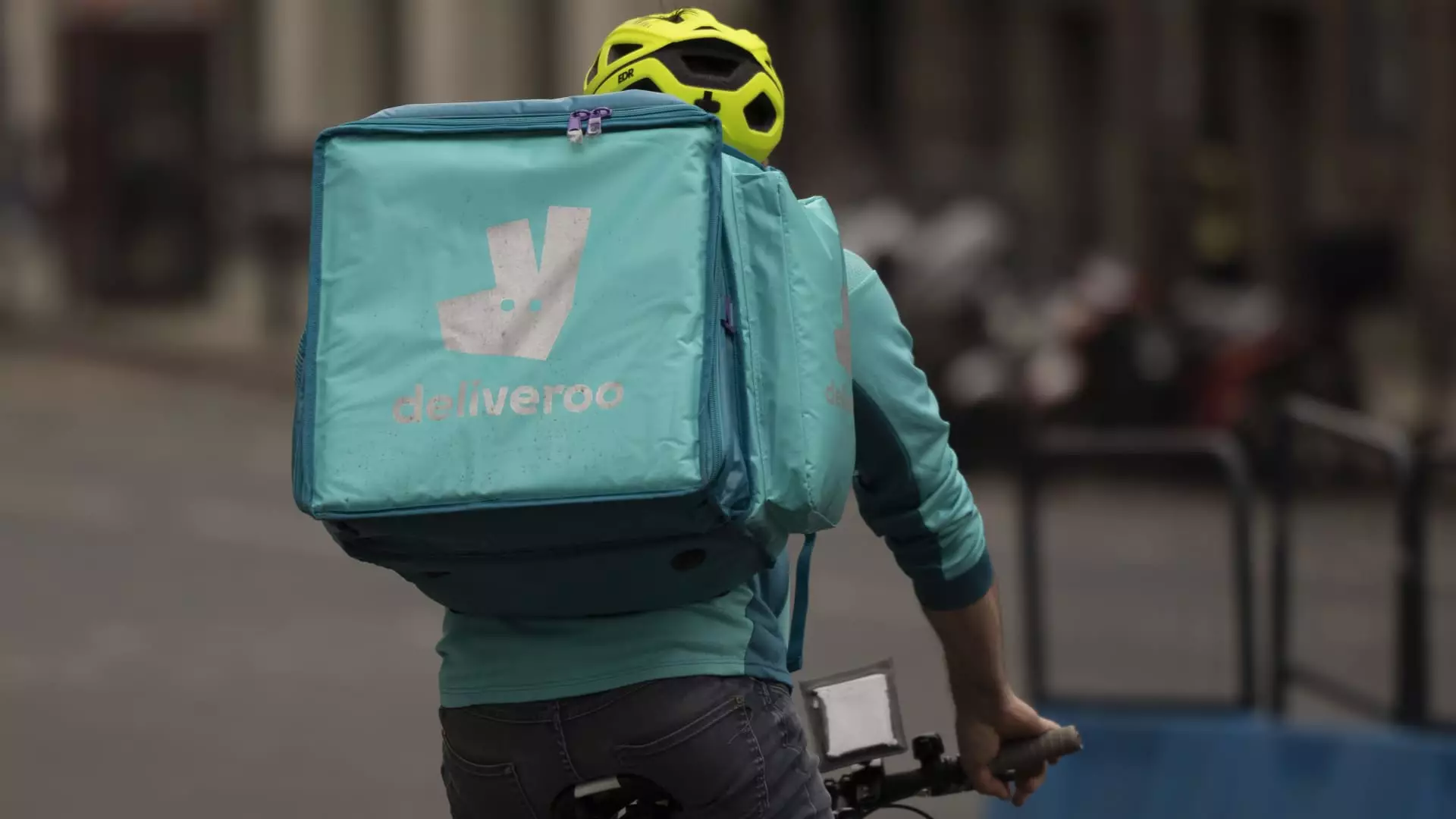In a move that underscores the ongoing evolution of the food delivery industry, British food delivery platform Deliveroo has entered into a pivotal agreement with American rival DoorDash, valuing the company at an impressive £2.9 billion ($3.9 billion). This acquisition is not merely a financial transaction; it represents a strategic expansion for DoorDash as it seeks to solidify its position in the increasingly competitive European market. The deal, sealed at 180 pence per share—a 44% premium from Deliveroo’s closing price prior to the offer—is indicative of DoorDash’s commitment to leverage Deliveroo’s established infrastructure and customer base across the continent.
DoorDash’s CEO, Tony Xu, recently expressed his enthusiasm regarding the potential synergies between the two companies. The combined reach will cover over 40 countries and serve a population exceeding 1 billion, a powerful union poised to benefit both local businesses and consumers alike. This move highlights the growing trend of consolidation in the food delivery sector—an industry already characterized by fierce competition and evolving consumer preferences.
Deliveroo’s Rocky Road to This Milestone
Deliveroo’s journey has not been without challenges. Initially hailed as a tech darling during its IPO, the company faced a staggering 30% drop shortly after its public debut on the London Stock Exchange in 2021, sparking serious concerns among investors. The backdrop of a pandemic-fueled boom in food delivery services soon gave way to skepticism about the model’s long-term sustainability in a post-Covid landscape. Key challenges included rising competition, legal battles over gig economy employment rights, and a shifting consumer landscape that began to favor diverse dining options.
Despite these hurdles, the recent climb in Deliveroo’s stock, peaking at a three-year high following the takeover announcement, suggests that the market may be re-evaluating its potential under DoorDash’s stewardship. It reflects a crucial turning point for Deliveroo and its shareholders, who had previously endured significant losses since the company’s IPO price of £3.90.
The Nature of the Food Delivery Landscape
The food delivery sector is undergoing significant metamorphosis, driven largely by changing consumer habits and technological advancements. More users are gravitating towards convenience and diversity in their culinary experiences, and food delivery platforms are adapting accordingly. The partnership between DoorDash and Deliveroo is a testament to this shift, showcasing how mergers can enhance operational capabilities and broaden market reach amidst fierce competition from players such as Uber Eats and Just Eat.
Additionally, recent strategic moves within the sector, such as DoorDash’s acquisition of the Finnish food delivery app Wolt for €7 billion and Deliveroo’s divestment of its Hong Kong unit to Delivery Hero, reinforce the narrative that consolidation is becoming not just advantageous, but necessary for survival in the highly competitive food delivery ecosystem.
The Road Ahead: A New Chapter for Deliveroo
While the merger offers promising prospects, it also invites scrutiny regarding how DoorDash will integrate Deliveroo’s operational model and brand identity. The food delivery app landscape is one where brand loyalty plays a significant role, and DoorDash must tread carefully in maintaining Deliveroo’s unique offerings while merging operational efficiencies.
Ultimately, DoorDash’s acquisition signifies ambition—a desire to capture a greater share of the global food delivery market. As DoorDash aims to enhance its international footprint, Deliveroo’s workforce and delivery framework stand to benefit tremendously from technological upgrades and best practices from its American counterpart. This could lead to improved service delivery, better customer experiences, and potentially, profitability in a market that has long struggled with razor-thin margins.
As the dust settles on this acquisition, all eyes will be on these two companies as they embark on a journey that could redefine the food delivery space while navigating the challenges that lie ahead in a rapidly changing global market. The merger not only holds implications for the companies involved but also for consumers and restaurants that depend on efficient delivery services in an increasingly digital age.


Leave a Reply